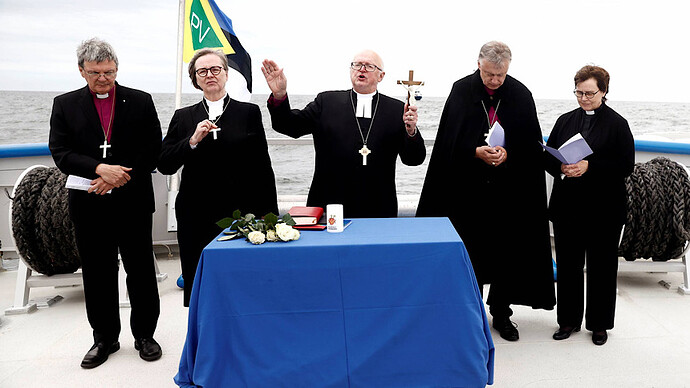This subject cannot be fully discussed without delving into the documentary that spurred the investigation. I’ve wanted to write a review for some time, but shied away from the task, because giving it the attention it deserves would require energy I don’t have to spend at the moment. It is a work of evil, and as such it deserves to be razed to the waterline, left to burn out, and put on display to live in eternal infamy. To do that, I would have to watch it all again, so that the details can be properly refuted and people called by their proper names. This movie upsets me quite a bit, and re-watching it would not play very nice with my ulcer, so if I have to choose between that and this absolutely excellent cup of Yellow Bourbon, freshly ground and brewed through a Bialetti, well… here I am, about to half-ass it.
The documentary consists of five full-length episodes, which I didn’t watch when it came out because I understood what it was. I didn’t need the abundant criticism from prominent journalists and authors that I respect (including Jan Guillou), to see that it was a bunch of conspiratorial bullshit glued together by pure speculation and utterly devoid of insight; it just plain reeked of it. In the end I watched it quite by chance, as I had traveled to stay with a friend of mine, who had obtained it on the mistaken assumption that it was just my kind of thing.
The first episode is actually quite excellent. Its goal seems to be to drive home the utter horror of the sinking, and the lasting national trauma on both sides of the Baltic. It does this very effectively, using harrowing first hand accounts from survivors, in conjunction with footage from the SAR ops. Especially that kid who was winched out of a life raft awash with dead bodies, wearing only boxers but somehow clinging to life, the footage rolling over his tearful account of how much he missed the people he lost that day, truly gutpunched me. His story is also really useful for understanding the role of preparedness in disaster survival, but that’s another topic.
From there on the documentary quickly disintegrates. The next episode is mostly a loaded opinion piece stating that the ship should have been salvaged in order to recover the dead, and presents no dissenting opinions or reasons why this might not be feasible, instead implying that there must be some conspiracy at foot. The last three episodes descend into utter drivel. The filmmakers identify numerous inconsistencies in the publicly available documentation, and parades them around one by one without examining them. For example, there is an indisputable inconsistency between the official timeline and times recorded by one of the passengers, of about one hour. To my mind, this would probably turn out to be due to time zones, but instead of examining that avenue of inquiry, they hold it as proof of foul play. They round this off with interviewing the head of the investigative committee in a most disrespectful manner, accusing him of falsifying the report.
This goes on and on. They consistently avoid looking too closely at anything they uncover, just keep saying “this is very strange, there must be more than meets the eye.” I kept telling my friend that I was looking forward to how they address the missing visor and the failure mode analysis, but was sorely disappointed, because they don’t! That’s right, they made a 5+ hour documentary about the accident, but don’t mention the visor in any other way than as a passing remark about the official version of events. When I realized this towards the end of the last episode, was also when I lost my last vestige of respect for the filmmakers.
This isn’t just an incompetent accident documentary, it is outright dishonest, only to serve its own sensationalist agenda. This alone would leave it as worthless drivel, but it crosses the line to utterly disgusting towards the end of the final episode. There is a scene where many (50?) of the survivors are subjected to a preliminary cut of the documentary. After the screening, quite a few of them are in shock, going on about how this has changed their view of things, how troubled they are, etc.
The filmmakers must be aware that they are engaging in unfounded speculation and disregard conclusive proof in a way that’s outright dishonest. They then not only show that they are aware that this process has had a profound impact on the survivors they’ve interviewed, but seek to maximize it, and bask in it like it’s a good thing that “their eyes have been opened”. That’s why I consider this “documentary” not only poor taste, but actually evil.


